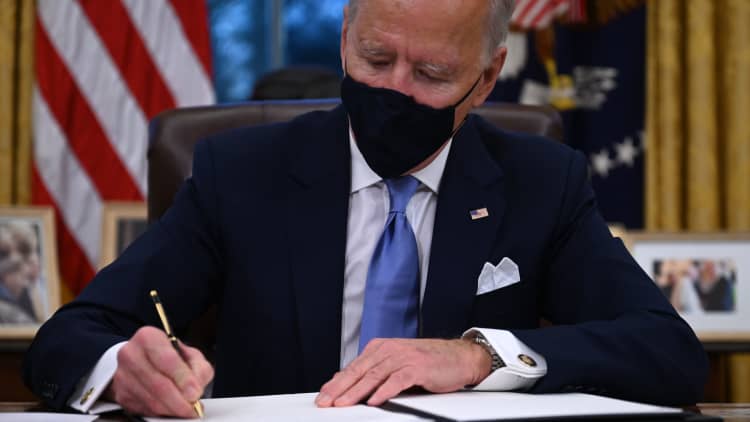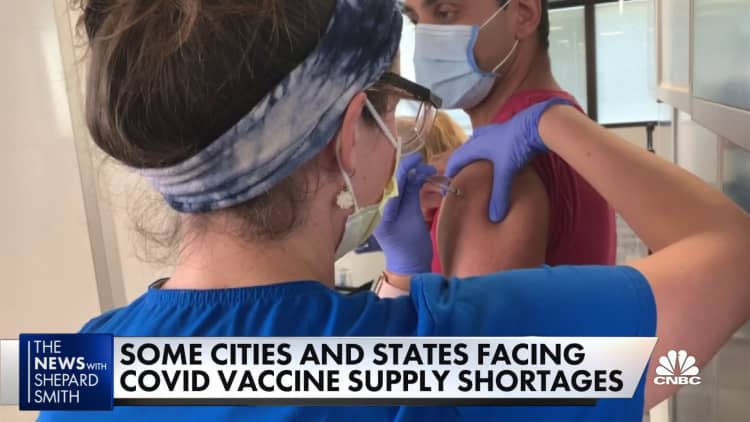
Even as cases of coronavirus rise, restoring in-person education is a top priority for the Biden administration.
On his first full day in office, President Joe Biden used his executive powers to direct the Departments of Education and Health and Human Services to collect national data on school closures and provide guidance on reopening.
The executive order, called "Supporting the Reopening and Continuing Operation of Schools and Early Childhood Education Providers," also encourages the Federal Communications Commission to improve internet connectivity "for students lacking reliable home broadband, so that they can continue to learn if their schools are operating remotely."
"Finally, we have a president who is committed to doing what educators, parents and students have yearned for since the first weeks of the pandemic — a real national plan to crush Covid that follows the science and secures the resources to make in-school learning safe," American Federation of Teachers President Randi Weingarten said in a statement.
More from Personal Finance:
Biden extends payment pause for student loan borrowers
Teachers are next in line for the Covid vaccine
In-person learning is a luxury months into the pandemic
The president's plan to reopen schools includes ramping up testing, accelerating the pace of vaccinations and providing more funding for educational institutions.
In addition, a newly formed Covid response team "will work to ensure that testing materials, support for contact tracing, and vaccinations for teachers are equitably provided to support in-person care and learning," according to the administration.
Under Biden's plan, schools could tap disaster relief funds from the Federal Emergency Management Agency for Covid-related expenses, such as personal protective equipment, sanitation, improved ventilation, reconfigured classrooms and upgraded technology.
The president also called on Congress to provide at least $130 billion in dedicated funding to schools and $350 billion in state and local relief funds to help school districts close budget gaps and provide additional resources for reopening. There is no timeline for Congress to take up this request.
Another $35 billion in emergency funds would go toward keeping colleges open.

Getting educators vaccinated is also key. The Centers for Disease Control and Prevention has prioritized teachers and school staff as "essential workers," making them next in line to get the vaccine.
However, with limited supplies, the initial distribution proved more complicated and chaotic in many areas across the country.
Biden said he will seek to accelerate the rollout of Covid vaccines by providing more funding to local and state officials, creating more vaccination sites and launching a national public education campaign.
"Schools districts across America are anxious to get our kids back to school," said Daniel Domenech, executive director of the School Superintendents Association.
"It's going to provide a lot of the resources that are necessary to do it and do it well," he said of Biden's plan.
Schools districts across America are anxious to get our kids back to school.Daniel Domenechexecutive director of the School Superintendents Association
New research shows distance learning has caused a significant setback in educational achievement, particularly among Black and Hispanic students, as well as students with disabilities.
As long as schools remain remote, the potential loss could be substantial, especially in mathematics — with students likely to lose an average of five to nine months of learning by the end of this school year, according to a recent study by McKinsey & Company.
Distance learning has also put outsized pressure on parents trying to balance work, child care and remote school — in addition to the financial burden.
From buying more groceries to new computers and technology upgrades, parents estimate they are spending up to $500 more a month to cover the cost of having children home every day, according to a report from Country Financial.
Further, 21% of parents said they had to change or reduce work hours due to changes in school or child care as a result of the pandemic, the report found.
Another 7% of parents had to leave a job altogether.


